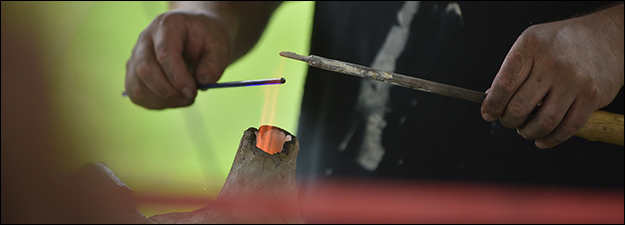Anglo-Saxon Elements in Middle English Literature
Sponsoring Organization(s)
Medieval Association of the Midwest (MAM)
Organizer Name
Dominique Battles
Organizer Affiliation
Hanover College
Presider Name
Dominique Battles
Paper Title 1
An Old English Riddle Recast in Fourteenth-Century Alliterative Verse
Presenter 1 Name
Brian Cook
Presenter 1 Affiliation
Univ. of Mississippi
Paper Title 2
British and Saxon in Layamon's Brut: The Case of King Arthur's Arms
Presenter 2 Name
Paul Battles
Presenter 2 Affiliation
Hanover College
Paper Title 3
Gamelyn and Aethelstan: Looking Back and Looking Forward
Presenter 3 Name
Edward L. Risden
Presenter 3 Affiliation
St. Norbert College
Start Date
14-5-2016 10:00 AM
Session Location
Valley I Hadley 101
Description
Recent scholarship has argued for the continuity of Anglo-Saxon literary tradition into the post-Conquest period. Anglo-Saxon narrative elements of character, landscape, battle tactic, architecture, mood, and plot design survive into Middle English literature as late as the fourteenth-century, long after this tradition was believed to have died out. Certain Middle English romances feature a hero characterized largely in Anglo-Saxon terms going up against a villain who bears all the hallmarks of Norman nobility and privilege, contrasting pre and post-Conquest ways of doing things.
Anglo-Saxon Elements in Middle English Literature
Valley I Hadley 101
Recent scholarship has argued for the continuity of Anglo-Saxon literary tradition into the post-Conquest period. Anglo-Saxon narrative elements of character, landscape, battle tactic, architecture, mood, and plot design survive into Middle English literature as late as the fourteenth-century, long after this tradition was believed to have died out. Certain Middle English romances feature a hero characterized largely in Anglo-Saxon terms going up against a villain who bears all the hallmarks of Norman nobility and privilege, contrasting pre and post-Conquest ways of doing things.

